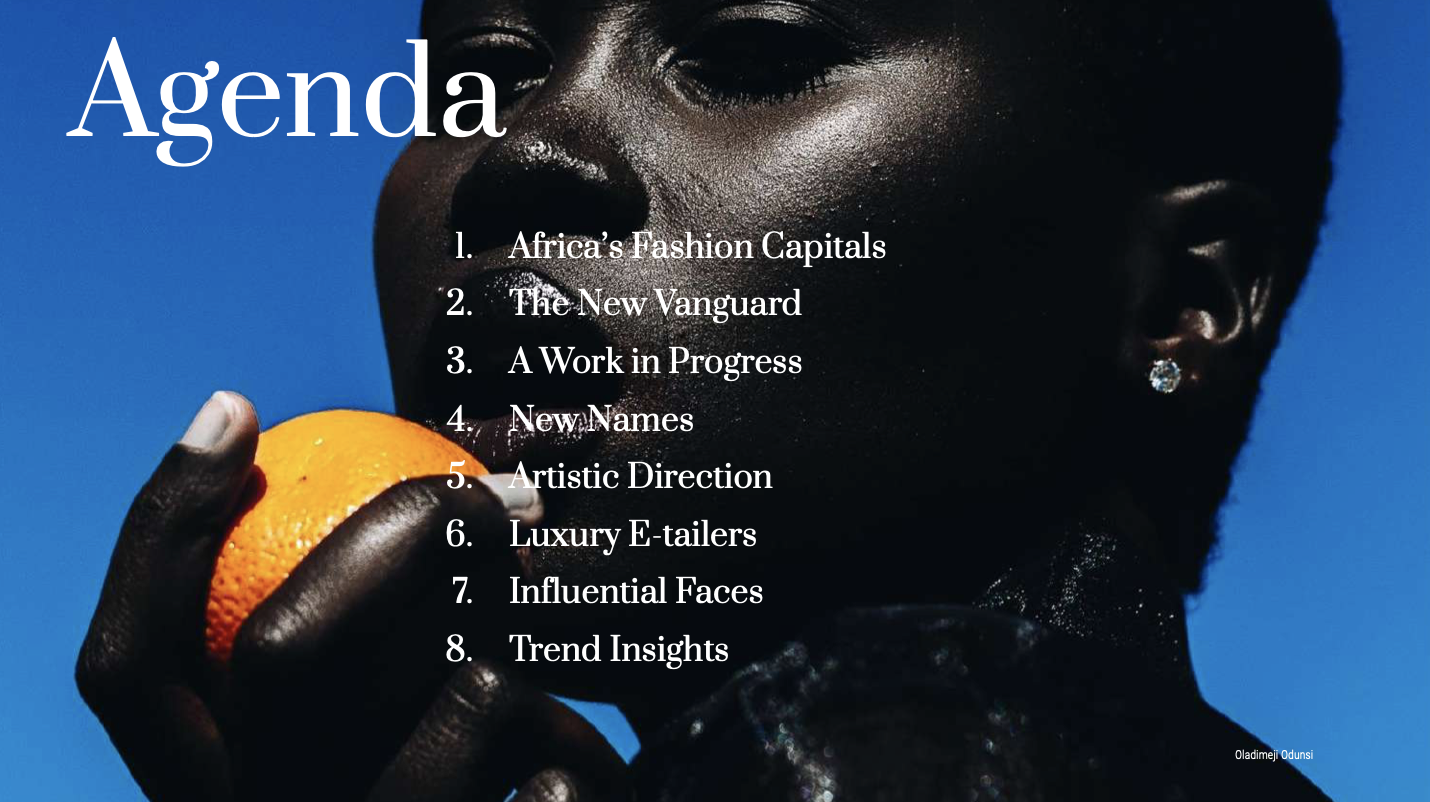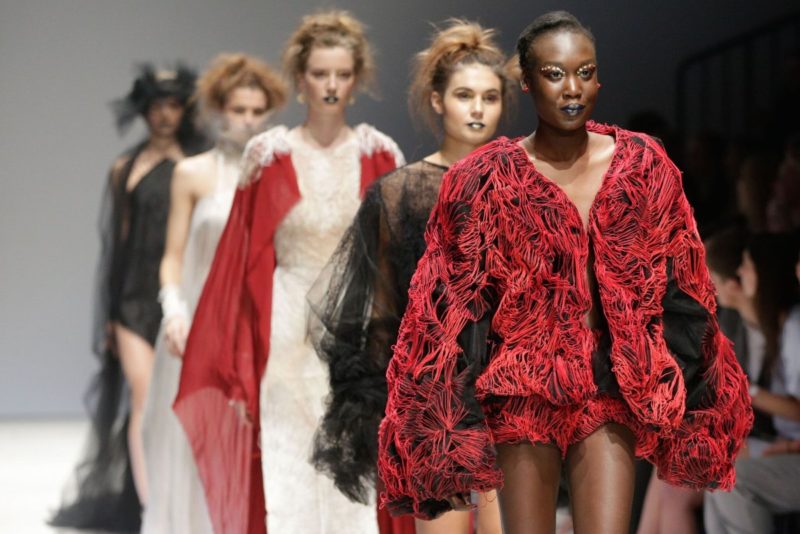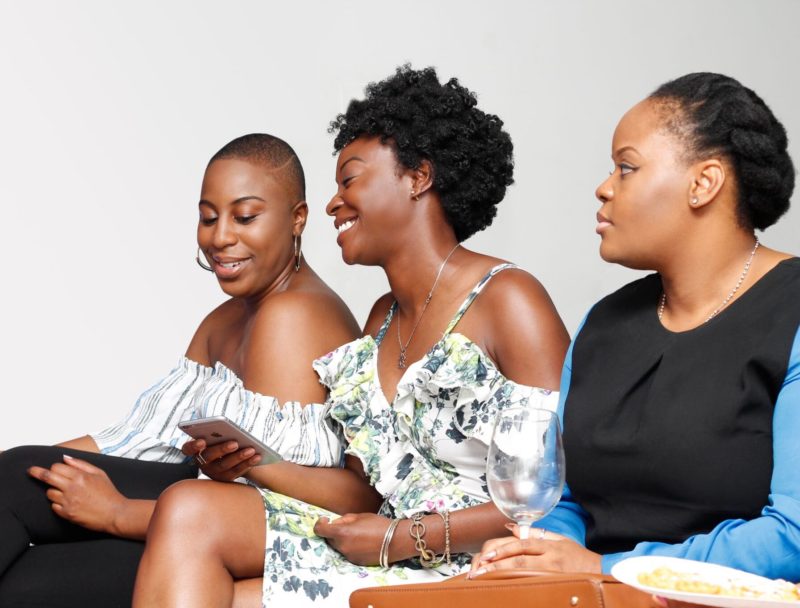Insights from Heuritech’s African Designers and Trends Report
African fashion is becoming an influence to be reckoned with and the world is beginning to take notice of the continent especially following the surge in global demand for Black-owned design. Therefore, it only seemed natural that Heuritech – a fashion technology company that uses market intelligence to empower fashion brands to forecast products and trends, would launch a report called African Designers and Trends: A Closer Look. To accompany the report, they recently hosted a webinar to share the key findings for Spring 2022, which this article will briefly discuss.
African Fashion is Diverse
Fashion weeks held on the African continent are typically during and around the month of October at fashion capitals from Senegal to South Africa, Ethiopia to Tanzania and most recently, have included campaigns to encourage customers to purchase locally-made fashion products. In all of this, it is important to know that African fashion is as diverse as the 54 countries on the continent and in discussing its influence on the world, it would be amiss to describe it as just one homogeneous entity e.g. it is more than just wax prints. And for the most part, these fashion weeks operate in an effort to boost the local industry in each country and highlight the potential of its fashion talent with a renewed focus.
According to the African trends report, the top cities for African fashion are:
South Africa Fashion Week – Johannesburg, South Africa.
Dakar Fashion Week – Dakar, Senegal
Lagos Fashion Week – Lagos, Nigeria
South Africa and Nigeria are two of Africa’s largest emerging, fastest growing and most powerful economies. Due to COVID-19, fashion weeks have had to push digital coverage and tackle sustainable development.
African Talent is On The Rise
Some of the rising talent in African fashion currently include Kenneth Ize, Sindiso Khumalo and Lukhayo Mdingi to mention a few. Other names to watch include Rich Mnisi, Mmuso Maxwell and Hanifa for womenswear and Ahluwalia, Ohloo and Lagos Space Programme in the menswear category.
European fashion capitals in Paris, Milan and London have highlighted and recognized African creativity by scheduling some of these designers in their calendar of fashion events. On the continent, young brands are adopting the power of storytelling to communicate distinct narratives that are shaping the African society such as national identity and heritage, spirituality, sexuality and more. Sustainability, responsible production and recycling or upcycling are themes that are becoming prominent on the scene for the brands.
Most of these brands are headed by individuals who are educated, well travelled and have been nurtured by both Africa and the Diaspora. And yet, this journey in the business of African fashion is not without its challenges. Many designers are unable to scale their ventures due to a lack of financial incentives and a value chain that makes cheap production outside the continent very tempting. Nevertheless, designers are rising to the challenge with creativity and grit.
Fashion Creatives are Using An African Lens
The African trends report also touched on the emergence and importance of art direction, not just design and craftsmanship – whether it has to do with photography or visual merchandising and more. For long, the African fashion narrative was depicted primarily through a Western lens which limited it to wax prints and tribal motifs but now, African creatives are telling their own stories by sharing stunning imagery derived from tapping into their heritage in a way that rivals Western sophistication to the notice of international publications like Vogue or Women’s Wear Daily (WWD). It is therefore very important to do art direction in collaboration with African creatives especially to avoid getting called out for cultural appropriation. Talent to watch in the creative space include Lejenke, Kusi Kubi, Ibrahim Kamara, Prince Gyasi and Stephen Tayo.
Luxury E-tailers Play a Big Role
Despite low internet penetration and logistical issues, e-commerce platforms are forging ahead with African luxury in mind. Some of them are Industrie Africa, The Folklore and Jendaya, who are now attracting international buyers. Luxury e-tailers along with influencers and celebrities (e.g. Nollywood) are helping to push African fashion foward.
Trends Forecast for Spring 2022
These African trends as presented by Heuritech were forecasted based on the work of various Pan-African designers. The company used its proprietary image recognition technology to analyze millions of Instagram images. This was done an effort capture insights into the influence of these trends on European markets as well. Trends for the Spring 2022 season will include:
Tie and Dye (Adire): It is worn by edgy customers, is popular and a safe bet for consumers in Spring 2022.
Stripes (Aso Oke): Vertical and colourful or overlayed with fringe, it lengthens the silhouette and offers an interesting alternative to pinstripes.
Kente: This fabric is infiltrating global style especially through designers who are introducing it to foreign fashion weeks e.g. Imane Ayissi for Parisian couture.
… and much more!
For more information about this trends analysis and to discover the remaining insights, please download the full report from Heuritech’s website.








Africans have a really very rich fashion history.. I totally love their traditional prints… Looking to shop for more Africa inspired styles soon.
Hello Riya,
Absolutely! The scope of African fashion is vast and highly creative. Whenever you are ready, you will find that there are many styles and designs to choose from.